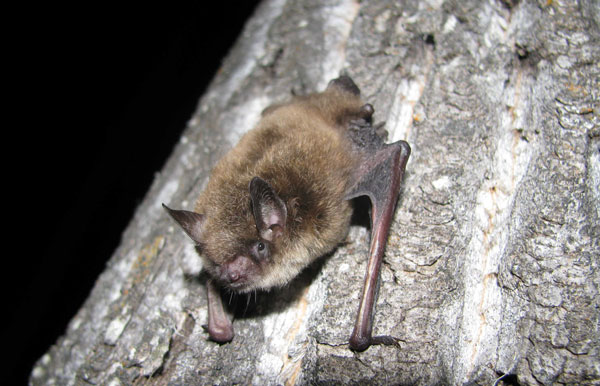
Parks Canada’s version of Batman is analyzing data on these nocturnal, endangered creatures in Prince Albert National Park so they can protect their habitats.
Ecologist Cory Olson said most people don’t realize it because of the nocturnal nature of bats, but you’ve likely come close to them while you’re in the park.
“As you walk through town on any given day, you’re probably coming within a few hundred metres of bats, but they’re very good at evading people,” he said.
The Little Brown Myotis and Northern Myotis species of bats were listed as endangered by the Government of Canada in 2012.
The decline of the creatures in North America is partly because of a fungal disease called white-nose syndrome. The closest place to the park it’s been detected is in Manitoba, said Olson.
As the disease makes its way to Saskatchewan, Parks Canada decided they needed to do something to figure out more about the whereabouts of the animals in the park and their reproductive patterns.
“It’s not here yet and we’re hoping it’s at least a few years off, but this is a very important time for collecting some baseline information that we can use to assess whether diseases that are conservation threats are impacting the bat population here,” said Olson.
As he explained, bats reproduce slowly. Usually they’ll only have one pup every year.
“They have to live long lives to make up for that slow reproductive rate. The oldest one we know of in Canada was at least 39 years old, but I think the thing that needs to be emphasized is that if we were to go and eradicate a large number of bats, it’s going to take many decades for that population to recover.”
The summer study consists of three parts.
The first consists of capturing the bats in thin nets and taking note of their measurements, sex and reproductive condition.
Secondly, they use a recording technology called a bat monitor that can detect their sounds. Olson said bats are actually one of the loudest animals at night, but they produce a frequency that humans can’t hear.
The third element is doing building inspections, where the Little Brown Myotis and their pups typically rest—in fact, this habit is also one of the reasons why the population is low.
“Illegal extermination of bats in buildings is easily one of the top conservation issues for bats,” said Olson.
Impact Assessment Coordinator and organizer of the study, Fiona Moreland, said this will help them make sure these buildings are protected.
“For instance, if we find that bats are using other park buildings that we weren’t aware of, we will take precautionary measures during any required maintenance to avoid disturbing the bats,” she said.
In addition, the research will help them create environmental impact assessments and a species recovery plan.

